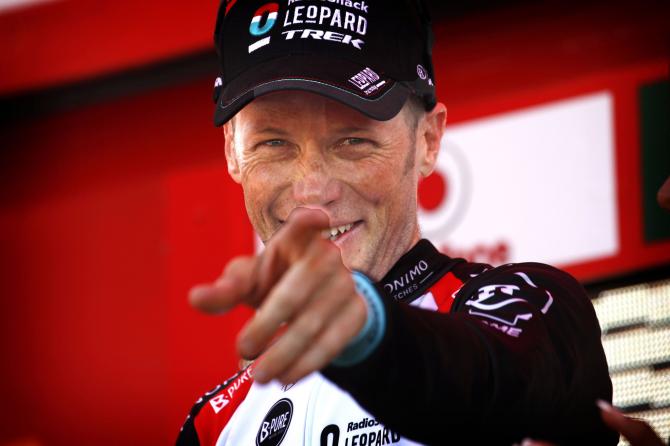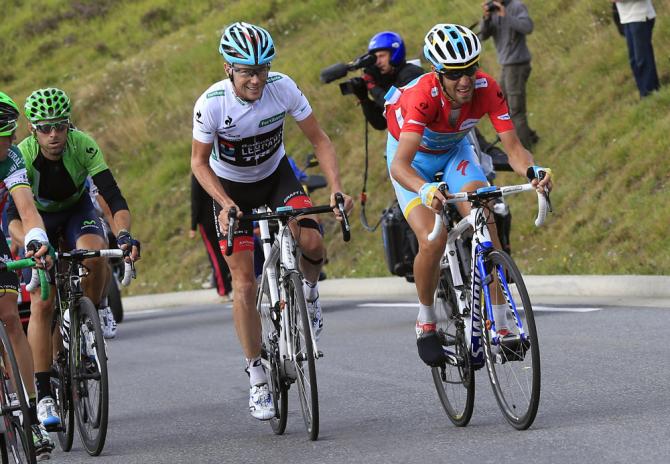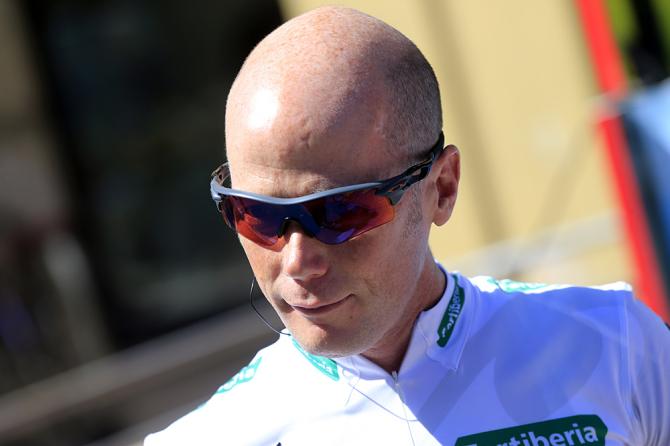Gazzetta dello Sport scrutinizes Horner's power data at the Vuelta
Italian newspaper claims the American produced 6.83w/kg on the Peña Cabarga climb



Italian sports newspaper Gazzetta dello Sport has scrutinized Chris Horner's performance during Thursday's stage at the Vuelta a Espana, calculating that the 41-year-old American produced a record breaking VAM of 2034 and a power-to-weight ratio of 6.83 watts/kg on the climb to the finish at Peña Cabarga.
Gazzetta reporter Claudio Ghisalberti said that Horner covered the 4.9km climb In a time of 16:40 at an average speed of 21.240km/h, producing an average of 437 watts. That was 20 seconds faster than Joaquim Rodriguez (Katusha) and Alejandro Valverde (Movistar) and 25 seconds faster than Vincenzo Nibali (Astana). Horner failed to take the race leader's jersey by just three seconds but could go on to triumph in the final two mountain stages at the Vuelta.
According to Gazzetta Horner's estimated VAM of 2034 apparently beats those set by Contador (1926) and Rodriguez (1903) on the Cuitu Negru climb on stage 14 of last year's Vuelta. Roberto Heras set a figure of 1900 in 2002. A reported tailwind helped the riders on the climb of Peña Cabarga and could be a factor in the high numbers.
VAM stands for 'Velocità Ascensionale Media' or Average Ascent Speed, with the infamous Dr. Michele Ferrari one of the first to use the calculation to compare riders' performances on climbs. Ferrari has coached Lance Armstrong and many other riders over the years and has been widely accused of doping by witnesses who gave evidence in the USADA investigation into Armstrong and the US Postal Service team. He was given a lifetime ban after opting not to fight the charges, although he has always denied any wrongdoing.
Gazzetta dello Sport claim that physiological experts agree that a 6.2 w/kg is natural limit of performance, with age often reducing an athlete's ability. Horner will be 42 on October 23 and is one of the oldest riders in the professional peloton.
Pseudo science?
Indirect performance data calculations have sparked much debate and argument in recent times. Team Sky manager Dave Brailsford dismissed similar calculations during the Tour de France as pseudo science. However French sports physiologist Antoine Vayer is convinced power data and VAM can be used to indicate unnatural performances.
The latest race content, interviews, features, reviews and expert buying guides, direct to your inbox!
According to Dr. Ferrari the road surface, drafting from teammates and other riders, hairpins and the wind can greatly affect performance, power data and VAM. He claims on his 53x12 blog that road surfaces can cause a variation of 6-10%, while wind can have a similar affect.
Horner races with an SRM power metre and the SRM website has published data from stage 10 of the Vuelta, when Horner won alone on the Hazallanas climb. The data shows he produced 390 watts in the final 4.5km of the climb, significantly lower than the calculations by Gazzetta for the Peña Cabarga climb.
